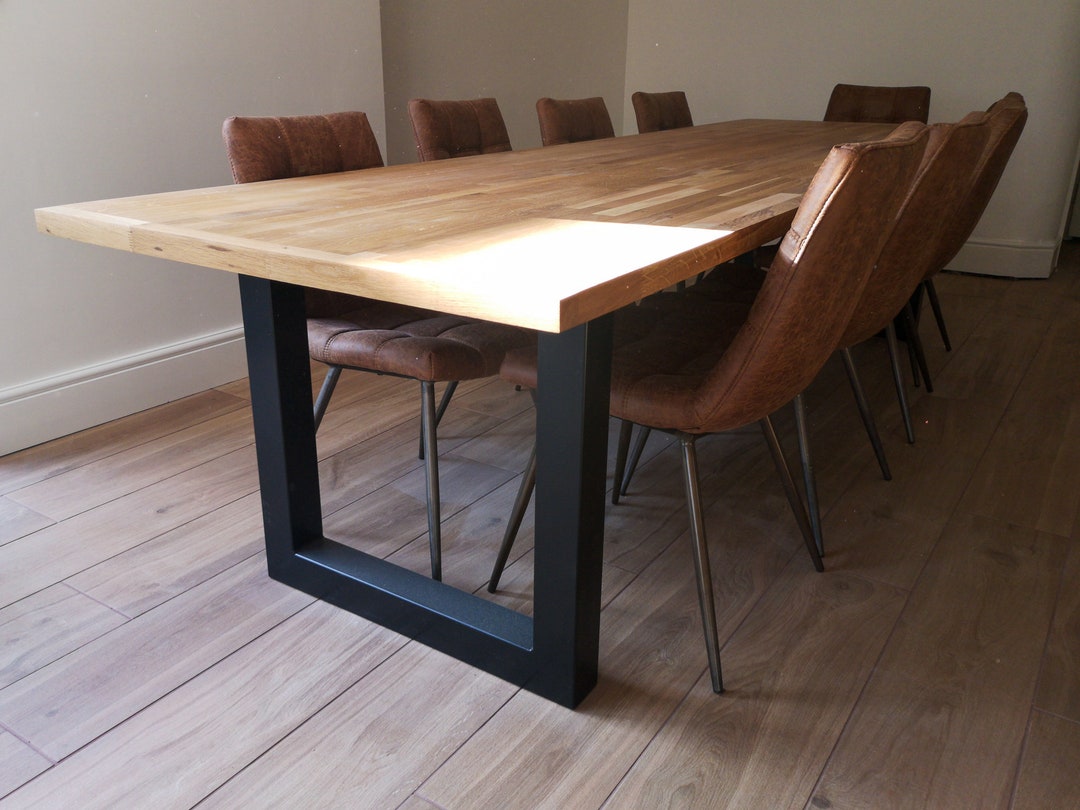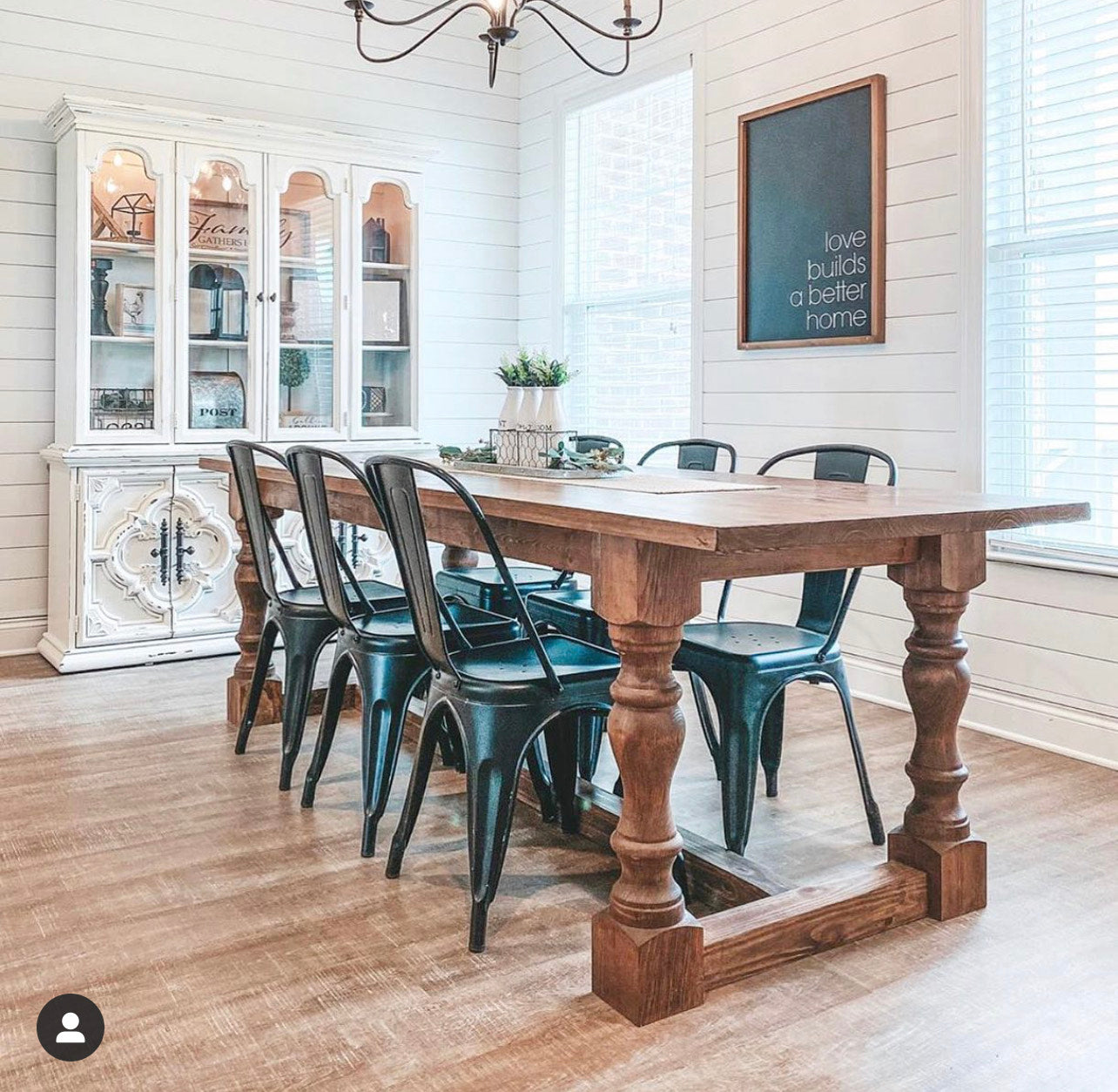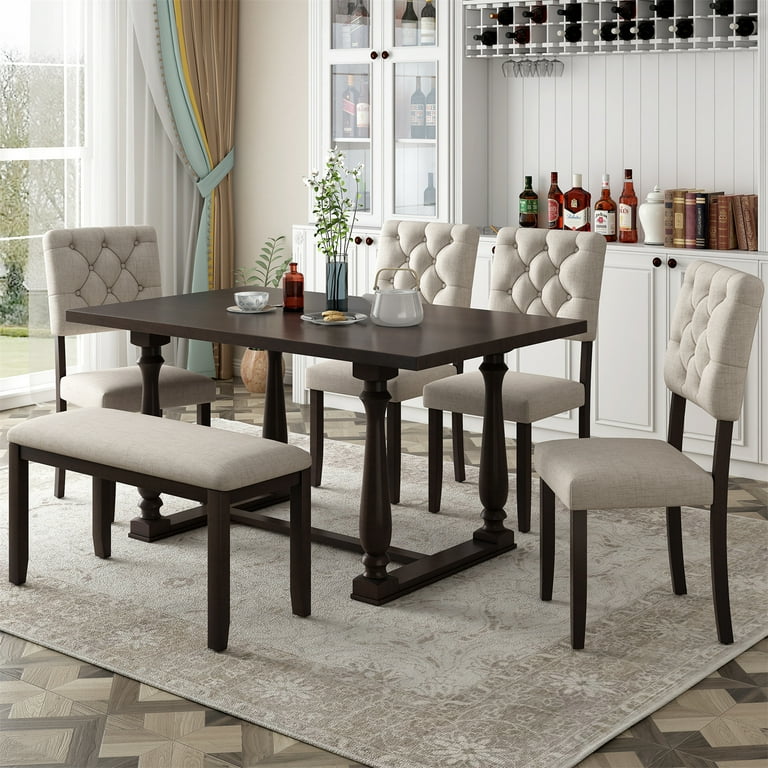Add Charm and Elegance to Your Space with Distinct Dining Room Table Legs
Professional Tips for Installing Dining-room Table Legs for Optimum Stability
When it pertains to mounting dining-room table legs, attaining optimum security is critical for both functionality and looks. The process begins with selecting the ideal products and equipment, followed by thorough alignment and factor to consider of weight distribution. Each action plays an essential duty in making sure that the ended up item stands up to everyday usage without endangering safety or style integrity. Understanding the nuances of these aspects can substantially affect the total end result. What specific strategies can boost stability also further?
Pick the Right Legs
When picking the proper legs for your dining room table, it is important to consider both capability and aesthetic appeals. The legs you choose will significantly influence the overall layout and stability of the table. First, examine the table's intended use; if you expect constant events, stronger legs, such as those made from solid wood or metal, may be preferable, as they provide increased durability and support.
Following, take into consideration the height and style of the legs in connection with the tabletop. Typical dining tables commonly vary from 28 to 30 inches in height, so make certain the legs line up with this requirement for comfort. The style of the legs should complement the layout of the tabletop-- whether it be contemporary, rustic, or traditional. For circumstances, tapered legs can include a contemporary touch, while transformed legs might convey an extra timeless visual.

Select Appropriate Hardware
How can the best equipment enhance the security and long life of your eating area table? The option of suitable hardware is critical to making certain that the legs of your table are firmly affixed and able to hold up against normal use. High-quality screws, bolts, and brackets give the needed strength to sustain the weight of the table, in addition to any type of extra loads placed upon it during events or dishes.
When selecting screws, choose those made from durable materials such as stainless steel or brass, which resist corrosion and keep integrity with time. The size of the screws is similarly important; they ought to permeate deeply into the table's structure without compromising stability. For bolted links, take into consideration making use of lock washers to avoid loosening because of vibration or activity.
Additionally, utilizing corner brackets can add added assistance, specifically for bigger tables or those with heavier tops. These braces disperse weight uniformly and aid preserve the table's form. Making sure that the equipment you select is ideal for the details products of your table will further boost its overall stability and durability, enabling you to enjoy your eating experience for several years to find.
Ensure Appropriate Alignment
Appropriate positioning of eating area table legs is necessary for both visual allure and useful security. Misaligned legs can result in an uneven table top, which might not just be aesthetically uninviting but also compromise the table's usability. To attain optimum alignment, begin by measuring the distance from the table's edges to the leg add-on factors. This ensures that each leg is positioned equidistant from the sides, creating a well balanced look.
Make use of a degree during setup to confirm that each leg is vertical to the table top. This action is vital, as even minor inconsistencies can intensify into substantial stability issues over time. It is advisable to note the desired leg placements on the underside of the table with a pencil or covering up tape before safeguarding them. This method acts as an aesthetic guide, allowing for modifications as needed.
In addition, verify the placement after the first screws are tightened up, as adjustments might be needed prior to totally protecting the hardware. By focusing on correct placement, description you not only improve the table's overall design however also make certain that it stays stable and practical for many years to find.

Think About Weight Circulation
After making sure correct alignment of the dining-room table legs, it is essential to consider weight circulation to enhance security and capability. dining room table legs. Correct weight circulation is crucial in preventing making certain and wobbling that the table can support its intended lots without risk of tipping or breaking down
When placing the legs, ensure they are placed at equivalent distances from the center of the table to uniformly distribute the weight across the framework. Take into consideration the weight of the table top and any type of things that will regularly hinge on it, such as tabletop devices or ornamental pieces. Tables with much heavier surfaces should ideally have legs positioned closer to the edges, as this takes full advantage of the base of support and lessens the danger of instability.
Additionally, if the table is intended for usage in a high-traffic location, consider making use of much heavier products for the legs or including stabilizing aspects, such as cross-bracing or a reduced shelf - dining room table legs. These modifications can assist preserve balance and avoid moving during usage. Eventually, a well-considered weight circulation strategy will considerably improve the table's total efficiency, guaranteeing it continues to be a useful and attractive focal visit here point for your dining space
Test Security Prior To Usage
Checking the security of the dining-room table before use is a critical action that must not be forgotten. Ensuring that the table is stable and safe can stop accidents and lengthen the lifespan of the furnishings. Begin by using mild pressure to different points on the table surface area. Lower on the center and after that along the edges, shifting or observing any kind of wobbling. Recognize the legs or joints that may need modification. if the table shows instability.
Following, examine that all bolts and screws are tightened up properly. Loose links can lead to instability and prospective damages gradually. If needed, utilize timber adhesive on joints to improve stability, ensuring to allow appropriate drying time.

Conclusion
In conclusion, the setup of dining-room table legs needs mindful factor to consider of products, alignment, weight, and equipment distribution to attain maximum security. By choosing sturdy legs and premium bolts, making sure accurate positioning, and dispersing weight uniformly, the structural honesty of the table can be significantly improved. Performing a stability examination before routine usage further makes sure that the table will hold up against daily pressures, thus providing a risk-free and trusted dining experience.
When it comes to installing dining area table legs, achieving optimum security is critical for both functionality and aesthetics. The legs you choose will considerably impact the general layout and security of the table (dining room table legs). Typical eating tables normally range from 28 to 30 inches in height, so read review guarantee the legs align with this requirement for comfort.Correct positioning of eating area table legs is vital for both aesthetic charm and practical stability.In final thought, the setup of eating area table legs requires careful consideration of materials, weight, equipment, and positioning distribution to achieve maximum security